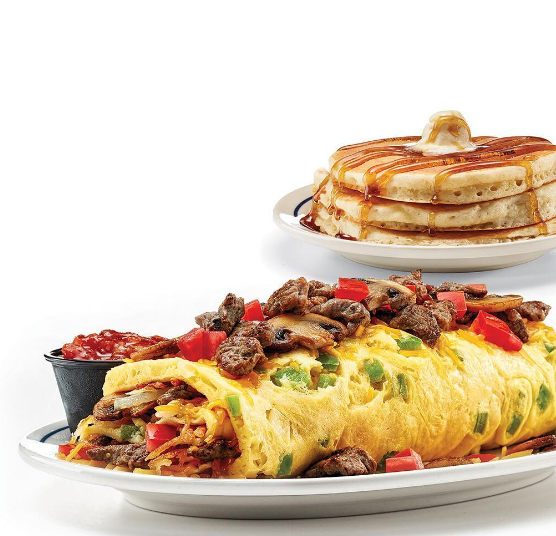
Some breakfast favorites carry a bit of mystery, especially when they arrive at the table looking larger or fluffier than expected.
Diners often enjoy these dishes without giving much thought to the techniques behind them, trusting that familiar places have their own way of doing things.
Every now and then, though, a small detail surfaces and changes how people view a longtime menu staple. Moments like these tend to spark curiosity, especially when the truth has been hiding in plain sight all along.
A viral reveal about IHOP’s famously fluffy omelettes
Many fans have wondered why IHOP’s omelettes are so unusually tall and soft, especially when the restaurant claims they use only three eggs.
A recent online creator drew attention to this mystery by revealing that the chain adds pancake batter to the eggs before cooking.
The discovery surprised diners who had never considered that the signature pancakes and omelettes share the same secret to their airy texture.
Reactions were intense, with some commenters calling the practice misleading while others simply felt let down by the unexpected extra ingredient.
Why the secret ingredient matters for certain diners
For many breakfast lovers, the added batter is harmless, but for others it raises serious concerns. Several viewers pointed out that the use of wheat and dairy makes the omelettes unsuitable for people with gluten or dairy allergies who believed the dish was otherwise safe.
One commenter noted finally understanding why they were consistently sick after eating the omelettes, underscoring how important accurate ingredient information can be. While some felt disappointed, IHOP has long displayed a clear notice stating that omelettes and breakfast bowls contain a splash of buttermilk and wheat pancake batter.
Source: christian.grossi / TikTok
How the added batter changes the texture
The chain’s technique works because pancake batter is naturally aerated, which helps the eggs become lighter, taller, and more tender.
The mixture doesn’t noticeably change the flavor, allowing the omelette to maintain its familiar taste while gaining the structure needed to hold hearty fillings.
This method also explains why homemade omelettes seldom reach the same impressive height as IHOP’s version, even with common tricks like extra whisking.
The batter gives the eggs both lift and stability, creating a dish that feels substantial without feeling heavy.
Also read: Feast big for less this season with KFC’s new holiday meal and 3 exciting gravy flavors!
Re-creating the IHOP method at home
Home cooks can try this approach by adding a small amount of pancake batter—no more than two tablespoons—to whisked eggs before pouring them into a pan.
Boxed mix works perfectly well, as the goal is simply to borrow the aeration rather than create noticeable pancake flavor.
Too much batter will shift the texture entirely, so a light hand is essential for getting the right balance.
IHOP’s folding technique also contributes to the signature look, using a partial fold on the sides and a burrito-style roll to create a tall, clean shape.
Also read: Don’t feel like cooking this Thanksgiving? These 7 restaurants have you covered—takeout or dine-in!
A breakfast secret hidden in plain sight
The technique may surprise some diners, but it fits naturally with IHOP’s identity and its focus on fluffy, comforting breakfast fare.
Those without dietary restrictions may see it as a bonus, since the dish essentially delivers both eggs and pancakes in each bite.
For others, the information offers clarity that can help them make safer and more informed choices when dining out.
No matter the reaction, the detail shines a light on how a small change can make a big difference in a classic breakfast item.
Read next:
- Fast food gets a fiery makeover: Taco Bell’s new treat is too good to miss—but it’s only here for a limited time!
- You won’t believe how ’70s “struggle meals” made a comeback as gourmet comfort food—are you missing out?
Many breakfast lovers enjoy learning the tricks behind their favorites, especially when the secret is so simple. Techniques like this show how restaurants create memorable dishes with just a few unexpected adjustments. Whether the batter trick feels clever or concerning depends on each diner’s needs and preferences. How do you feel about adding pancake batter to an omelette, and would you try it at home?






